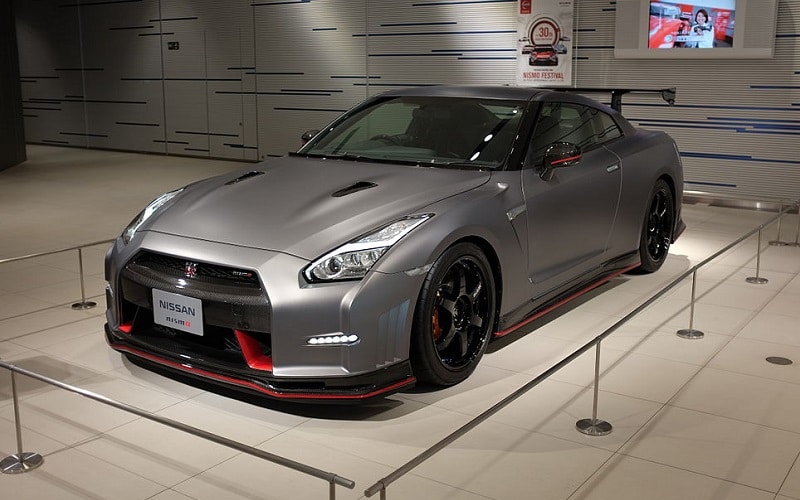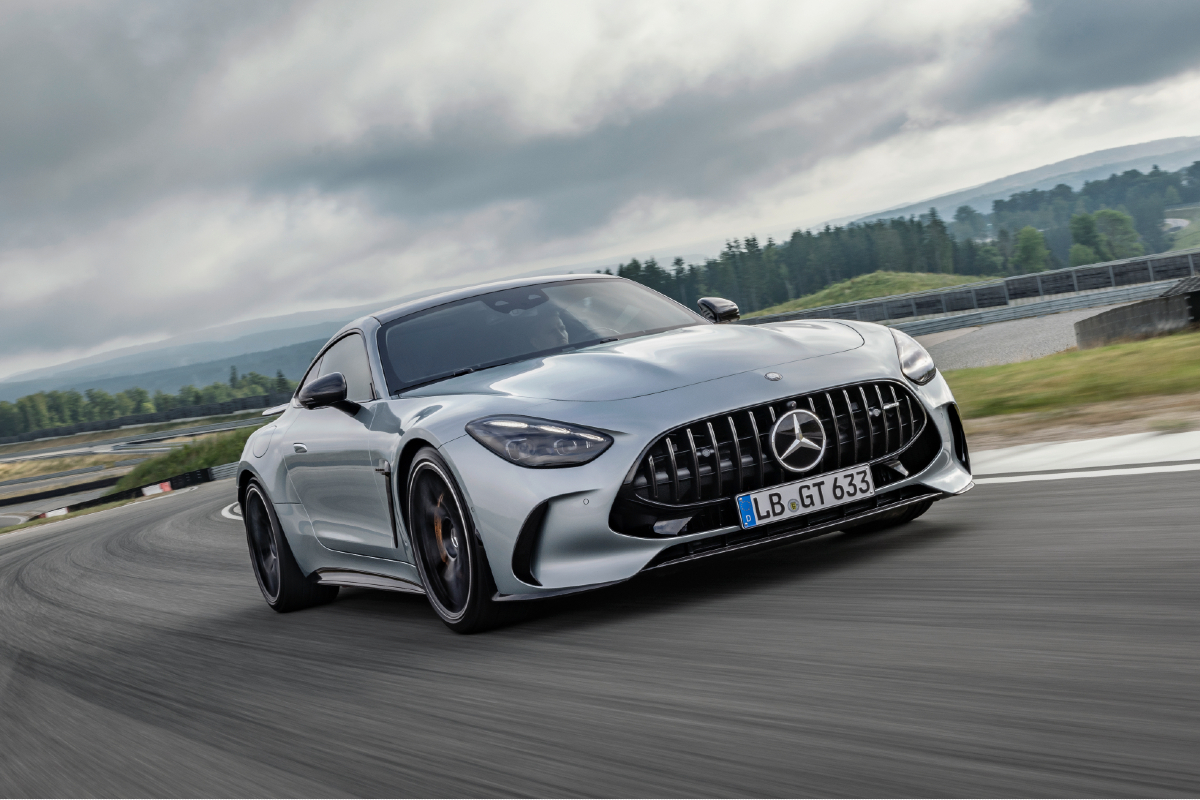Is a Muscle Car a Sports Car
A muscle car is not a sports car; they are distinct categories. Muscle cars are known for their raw, straight-line speed, whereas sports cars focus on agility and handling.
Muscle cars, synonymous with American car culture, emerged in the 1950s and 60s as high-performance vehicles with powerful engines designed for maximum acceleration and speed. They were built for the thrill of fast quarter miles and had a no-nonsense attitude that prioritized power over precision.
While they share the performance aspect with sports cars, they diverge significantly in design philosophy. Sports cars, on the other hand, balance speed with sleek design and superior handling, suitable for navigating tight corners and varied terrain with ease. This introduction sets the stage to delve deeper into the cultural impact of muscle cars, their engineering, and how they embody the spirit of an era focused on horsepower and the American love for the open road.

Credit: m.youtube.com
Debating Definitions
What really sets apart muscle cars from sports cars? Let’s dive into the heart of automotive enthusiasm and tackle two of the most beloved types of vehicles. The debate often takes a turn into a myriad of definitions, with each side staunchly defending their favorite rides. Here, we’ll break down the characteristics that differentiate these two powerhouses.
Muscle Cars: Raw Power Defined
Muscle cars stir the soul with their distinctive roar and brute strength. These iconic vehicles emerged in America, capturing hearts with their no-nonsense approach to power. Muscle cars prioritize straight-line acceleration, featuring:
- Large displacement V8 engines
- Rear-wheel drive
- Lightweight bodies for speed
- Affordable prices
Their raw, untamed force is suited for drag racing and high-speed blasts. Classic examples like the Ford Mustang and Chevrolet Camaro are not just cars but symbols of an era.
Sports Cars: Performance And Handling
On the flip side, sports cars are the maestros of the curve-hugging dance. These machines are engineered for precision, balance, and grace on the road. Here are their defining features:
| Feature | Description |
|---|---|
| Lightweight Construction | Reduces weight for better agility |
| Aerodynamic Designs | Enhances stability at high speeds |
| Advanced Suspension | Improves cornering |
| High Power-to-Weight Ratio | Ensures swift acceleration and responsive handling |
Sporty legends like the Mazda MX-5 and Porsche 911 embody these characteristics. They offer not just speed, but also a symphony of driving dynamics.
Understanding these distinctions allows car enthusiasts to appreciate the unique flavors that muscle and sports cars bring to the world of automobiles. They each satisfy a different kind of speed pursuit.
Historical Perspectives
When exploring the rich tapestry of automotive history, the distinction between muscle cars and sports cars often blurs. Both car types boast high performance and power, yet they hold distinct places in automobile evolution. Let’s journey through time to understand how each carved its niche in the motoring world.
The Birth Of Muscle Cars
The term muscle car paints a picture of raw power, roaring engines, and American ingenuity. In the 1940s and 1950s, car enthusiasts began modifying affordable family cars by adding more powerful engines. This trend led to the first official muscle car, the 1949 Oldsmobile Rocket 88.
Manufacturers soon took notice and the 1960s witnessed a boom in muscle car production. Iconic models like the Ford Mustang, the Chevrolet Camaro, and the Pontiac GTO became symbols of high-speed, straight-line performance, capturing the spirit of competitive American car culture.
- 1964 Ford Mustang: Ignited the muscle car trend
- 1967 Chevrolet Camaro: Rivaled Mustang’s popularity
- 1970 Dodge Challenger: Known for its Hemi power
Sports Cars Through The Years
Sports cars have long been associated with sleek designs, agile handling, and European finesse. In the early 20th century, they emerged as a distinct category focusing on driving enjoyment and on-track performance.
Iconic brands like Porsche and Ferrari set the standard in the sports car domain. From the elegant 1960s Ferrari 250 GTO to the Porsche 911, sports cars were designed to conquer curves and master maneuverability. Unlike the straight-speed heroes in muscle cars, sports cars were built to excel on winding roads and race tracks.
| Model | Brand | Year |
|---|---|---|
| Ferrari 250 GTO | Ferrari | 1960s |
| Porsche 911 | Porsche | 1964 |
| Jaguar E-Type | Jaguar | 1961 |
In conclusion, the classification of a vehicle as either a muscle car or sports car is deeply rooted in automotive history and culture. Understanding these historical backgrounds helps car enthusiasts appreciate the uniqueness of each vehicle type. Whether fueled by American muscle or refined by European craftsmanship, these cars remain treasured pieces of motoring heritage.
Comparing Characteristics
Let’s dive into the world of roaring engines and sleek designs to compare muscle cars and sports cars. People often use these terms interchangeably. But they’re quite different on closer inspection. Here’s a breakdown of what sets them apart, looking at engine size, design, aerodynamics, and driving dynamics.
Engine Size And Output
Muscle cars boast large, powerful engines designed for straight-line speed. Comparatively, sports cars often have smaller, more technologically advanced engines that optimize performance.
| Muscle Car Engines | Sports Car Engines |
|---|---|
| Big-block V8s | Turbocharged smaller-capacity |
| High horsepower | Balanced power and efficiency |
| Raw acceleration | Precision and agility |
Design And Aerodynamics
Muscle cars stand out with their iconic, retro aesthetics. They often have a more robust and heavier build. Sports cars prioritize aerodynamic profiles leading to smoother, slicker lines and overall improved airflow.
- Classic, boxy outlines for muscle cars
- Curvy, fluid shapes for sports cars
Driving Dynamics
The driving experience between the two car types is distinct. Muscle cars offer a sense of raw power and straight-line performance. In contrast, sports cars are about precision handling and cornering. They typically feature advanced suspension systems and lighter weights to navigate twists and turns effortlessly.
- Thrilling straight-line sprints in muscle cars
- Agile and responsive maneuvering in sports cars

Credit: musclecar.uk
Cultural Impact
Exploring the world of powerful vehicles brings us to a question. Is a muscle car a sports car? This debate rages on in car communities. But what’s undeniable is the cultural footprint both hold. Each car type captivates enthusiasts in its own style. We’ll drive through their history and iconic status, understanding their place in culture.
Muscle Cars In American Culture
Muscle cars are emblematic of American freedom and power. Born in the 1960s, they reflect an era of innovation and rebellion. Distinct for their high-performance engines, bold designs, and affordability, these cars became a youth sensation. Over the years, muscle cars have cemented themselves in American heritage. They symbolize the pursuit of speed in the land of opportunity. Key points include:
- Larger-than-life presence in movies, music, and television
- Icons of American engineering with massive V8 engines
- Stars of classic car shows and auto festivals nationwide
Driven by a powerful nostalgia, muscle cars are collector’s items today. They link past generations with the present, fostering community among enthusiasts. Below is a table showcasing popular muscle cars and their attributes.
| Car Model | Engine Size | Year of Origin |
|---|---|---|
| 1969 Ford Mustang | 7.0L V8 | 1969 |
| 1970 Chevrolet Chevelle SS | 6.5L V8 | 1970 |
| 1968 Pontiac GTO | 6.5L V8 | 1968 |
Sports Cars As International Icons
Contrasting muscle cars, sports cars ignite passion across borders. These sleek machines are renowned worldwide, often linked with luxury and prowess. Originating from European brands, sports cars paint a picture of global sophistication. Their nimbleness, technological advancements, and exquisite aesthetics set them apart. Here’s what makes them special:
- Global racing legacy in events like Formula 1 and Le Mans
- Engineering marvels from Italy, Germany, and beyond
- Coveted by collectors for their rare beauty and innovation
Sports cars transcend simple transportation. They are testaments to human craftsmanship and desire for perfection. Often seen as aspirational, these cars are muses for designers and dreamers worldwide. They showcase the zenith of automotive development and continue to evolve.
Evolving Trends
As car enthusiasts dive into the dialogue of muscle cars versus sports cars, trends within the automotive industry evolve with time. Let’s look into these shifts that are redefining what each of these powerful machines can be.
Modern Interpretations
Today’s automotive landscape blurs the lines between muscle and sports cars. Manufacturers integrate performance features across models, leading to a new breed of hybrid designs. You can now experience the realm where high horsepower meets agile handling and enhanced aerodynamics.
- Lighter materials contribute to the sports car agility in modern muscle cars.
- Muscle cars embrace sports car seating and tech-powered dashboards.
- Power is no longer the sole dominator; now, the focus is on balance and dynamics.
Hybrid And Electric Shifts
The automotive world is loud with the roars of electric engines as muscle and sports cars adopt new powertrains. Electric motors elevate torque, smuggling in the silent strength as they reshape car categories.
| Feature | Muscle Car Adaptation | Sports Car Adaptation |
|---|---|---|
| Electric Powertrains | Electric muscle cars bring instantaneous power. | Sports cars gain superior acceleration and efficiency. |
| Regenerative Braking | Adds sustainability to raw power. | Enhances track times with energy recovery. |
| Aerodynamics | Muscle cars gain improved fuel economy. | Sports cars maximize downforce for superior handling. |
Inclusion of hybrid and electric engines in classic muscle car designs is not just a nod to environmental concerns; it’s a power move. Modern muscle cars equipped with electric drivetrains provide earth-shattering acceleration while sports cars with electric boost compromise less on range and refueling.
Frequently Asked Questions Of Is A Muscle Car A Sports Car
What Defines A Muscle Car?
A muscle car is characterized by its high-performance, large V8 engines, and affordable pricing. Often, they prioritize straight-line speed and an aggressive appearance over handling and luxury features.
Are All Sports Cars Also Muscle Cars?
No, sports cars are not necessarily muscle cars. Sports cars focus on handling, performance, and aesthetics. Muscle cars emphasize raw power and straight-line acceleration, commonly with American branding.
How Does A Muscle Car Handle?
Muscle cars may not handle as sharply as sports cars due to their heavier build and focus on engine power. They’re designed for speed rather than cornering agility.
What Era Did Muscle Cars Originate?
Muscle cars rose to popularity in the 1960s and 1970s in America. This period is considered the golden era for these high-performance, affordable vehicles designed for powerful driving.
Conclusion
Exploring the muscle car and sports car arena reveals unique differences and thrilling similarities. Each boasts a dedicated fan base, a history of performance, and style that turns heads. Remember, whether you lean towards a growling V8 or a sleek two-seater, the choice reflects your personal taste in automotive adrenaline.
Choose your ride and make the road your own.




